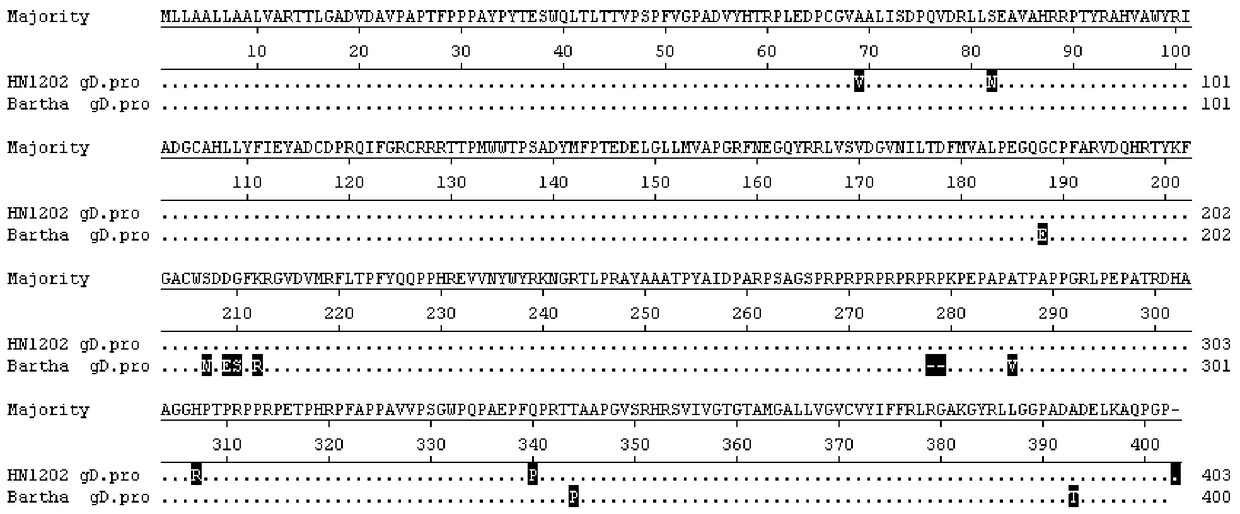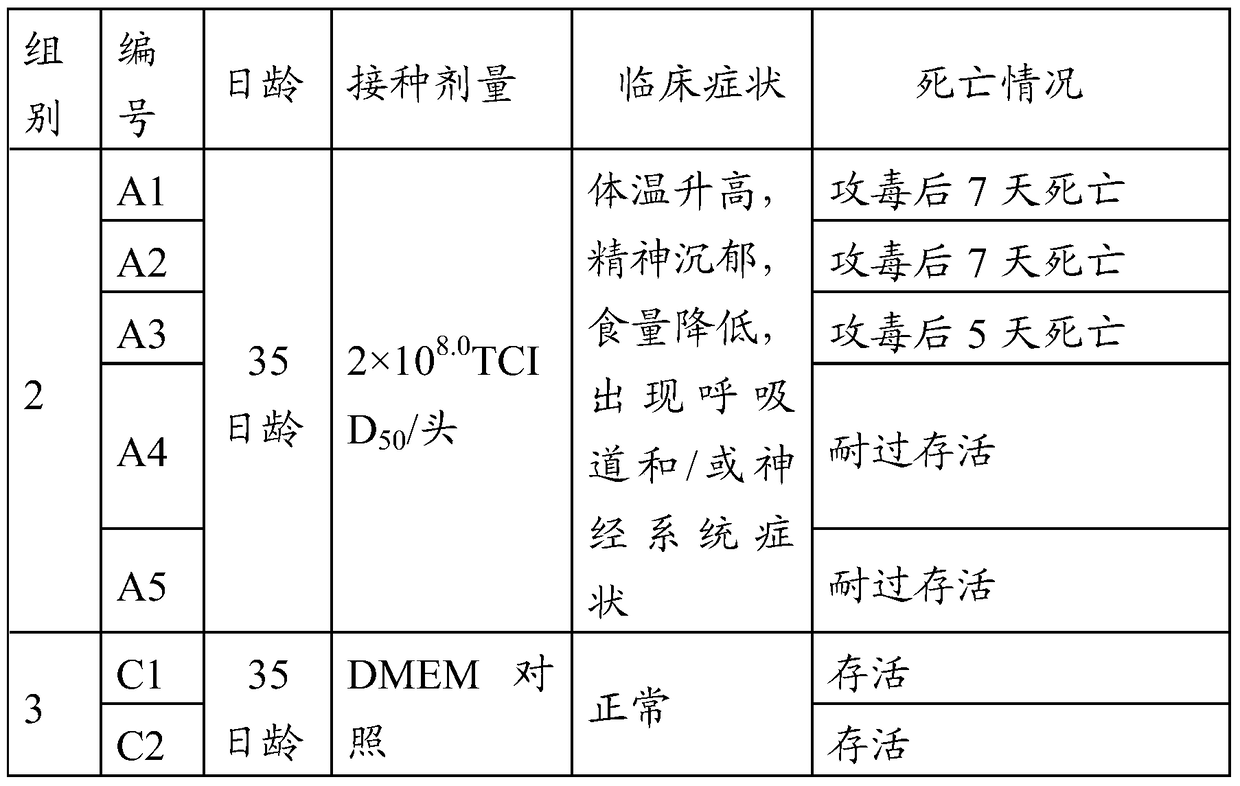A kind of porcine pseudorabies virus strain, vaccine composition and its preparation method and application
A technology of porcine pseudorabies and vaccine composition, applied in the field of animal virology, capable of solving problems such as respiratory tract and/or neurological symptoms
- Summary
- Abstract
- Description
- Claims
- Application Information
AI Technical Summary
Problems solved by technology
Method used
Image
Examples
Embodiment 1
[0051] Embodiment 1, collection and isolation of virus
[0052] Isolate the sample from the suspected porcine pseudorabies infection sample from Henan, aseptically collect pig brain tissue, add MEM culture solution at 1:10 (volume ratio), grind, prepare tissue suspension, after repeated freezing and thawing for 3 times, 2000r / min centrifuged for 15 min, collected the supernatant, and then filtered through a 0.2 μm membrane filter, inoculated on PK-15 cells and incubated at 37°C for 1 hour, replaced with MEM medium containing 2% calf serum, and incubated at 37°C for 5 days. Harvest the poisonous culture medium, freeze and thaw twice, collect the poison, and add MEM culture medium containing 2% calf serum. Porcine pseudorabies virus PCR detection kit (Beijing Century Yuanheng Animal Epidemic Prevention Technology Co., Ltd.) was used to detect porcine pseudorabies virus, and the result was positive; the isolated virus was detected by using PCR kit to detect exogenous virus (porc...
Embodiment 2
[0054] Embodiment 2, the genetic characteristic of isolated virus
[0055] The genetic characteristics of the virus isolated in Example 1 were determined by genetic analysis. The genomic DNA of porcine pseudorabies virus isolated on PK15 cells was used as a template, and the primers shown in Table 1 were used for PCR. Primer Premier 5.0 was used to design primer sequences for amplifying the gD gene, respectively.
[0056] Using the extracted genomic DNA as a template, prepare the PCR amplification system as follows: template DNA 100 μg, PrimerSTARHS DNA Polymerase (2.5 U / μl) 0.5 μl, 2×PrimerSTARGC Buffer 25 μl, upstream and downstream primers 1 μl (10 pmol / μl), dNTP Mix (2.5 mM each) 4 μl, and make up the volume to 50 μl with distilled water. A two-step PCR reaction was performed: denaturation at 98°C for 10sec, followed by annealing and extension at 68°C for 1min15sec, a total of 30 cycles. The PCR reaction was terminated at 4°C. The resulting PCR products were analyzed b...
Embodiment 3
[0059] Embodiment 3, the pathogenicity test of virus
[0060] 3.1 Pathogenicity of piglets of different ages
[0061] Six 34- to 35-day-old swine pseudorabies antibody-negative piglets were randomly divided into 2 groups, 5 pigs / group (test group) and 2 pigs / group (control group), and were inoculated with porcine pseudorabies virus HN1202 strain (challenge dose 2×10 8.0 TCID 50 per head), the control group was inoculated with DMEM medium; after the virus inoculation, the body temperature of the piglets was measured every day, and the clinical symptoms and death were observed. The specific results are shown in Table 2.
[0062] Table 2 Pathogenicity of swine pseudorabies virulent HN1202 strain to piglets of different ages
[0063]
[0064] The results showed that porcine pseudorabies virus HN1202 strain inoculated 35-day-old piglets could cause disease and 3 / 5 piglets died.
PUM
 Login to View More
Login to View More Abstract
Description
Claims
Application Information
 Login to View More
Login to View More - R&D
- Intellectual Property
- Life Sciences
- Materials
- Tech Scout
- Unparalleled Data Quality
- Higher Quality Content
- 60% Fewer Hallucinations
Browse by: Latest US Patents, China's latest patents, Technical Efficacy Thesaurus, Application Domain, Technology Topic, Popular Technical Reports.
© 2025 PatSnap. All rights reserved.Legal|Privacy policy|Modern Slavery Act Transparency Statement|Sitemap|About US| Contact US: help@patsnap.com



